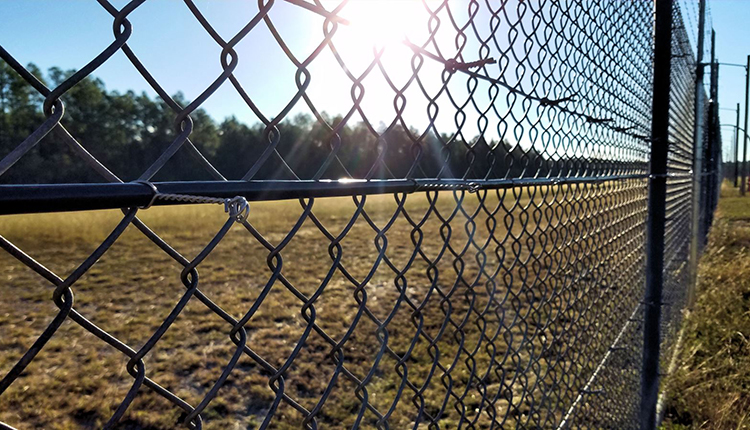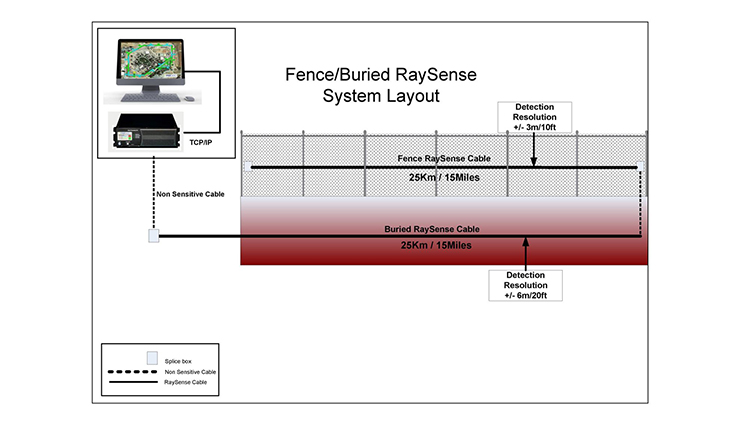Why a Fiber Security System Outperforms Traditional Security Systems
Wiki Article
Boost Your Security With Advanced Fiber Optic Security Systems
In an era where security is critical, advanced fiber optic safety systems present a compelling solution for improving safety throughout various atmospheres. These systems not only boast superior bandwidth and speed for high-resolution surveillance however also offer remarkable strength against outside interferences. As companies increasingly look for reputable means to secure their assets, the integration of ingenious modern technologies like AI and IoT within fiber optic structures raises essential concerns about their efficiency compared to conventional systems. What implications do these innovations hold for future safety measures?Benefits of Fiber Optic Protection
Using the benefits of fiber optic technology significantly enhances safety systems across numerous applications. Among the key benefits is the enhanced data transfer capability, enabling the transmission of large amounts of data at broadband. This is particularly critical for real-time video clip security, where high-resolution feeds can be sent out without latency, making sure instant reaction capacities.Additionally, optical fiber show premium resistance to electromagnetic disturbance, which is crucial in atmospheres with possible signal interruptions. This integrity makes certain constant efficiency in critical safety and security procedures. Fiber optic cables are much less vulnerable to touching and unapproved access compared to standard copper wiring, therefore enhancing data integrity and privacy.
One more noteworthy advantage is the sturdiness of fiber optic systems; they are extra immune to environmental factors such as wetness, temperature level variations, and corrosive substances. This durability converts to decrease upkeep prices and longer life expectancies for security setups.
Last but not least, the lightweight nature of fiber optic cable televisions facilitates much easier installation and transmitting, particularly in intricate infrastructures (fiber optic security system). Eventually, the integration of fiber optic innovation right into safety and security systems not only bolsters defense steps however additionally maximizes operational effectiveness
Trick Attributes to Take Into Consideration
When examining fiber optic safety systems, several crucial features have to be considered to make certain optimum efficiency and effectiveness. Analyze the system's detection array and level of sensitivity; an extensive array permits for checking huge locations, while high level of sensitivity makes sure that even small disruptions are found immediately.Next, take into consideration the integration capacities of the system. A fiber optic safety system should perfectly interface with existing safety steps such as video cameras and alarm systems, creating a natural safety and security network.
Longevity and environmental resistance are likewise crucial attributes. Guarantee that the system is developed to withstand extreme climate condition and potential physical hazards, as this will lengthen its operational life expectancy.

Lastly, look right into the scalability of the system. A robust fiber optic safety system must be easily expanding to accommodate future demands without significant overhauls. By thoroughly considering these functions, you can pick a fiber optic security solution that improves safety and safety and security in your atmosphere.
Setup Refine Overview
To effectively implement a fiber optic security system, a systematic setup procedure is important. This process begins with a detailed website assessment to establish the specific safety and security demands and to identify optimal locations for fiber optic wires and safety and security gadgets. Following this analysis, the installment group will certainly develop a thorough plan, consisting of cable pathways, essential devices, and compliance with regional regulations.Following, the installment entails laying the fiber optic wires, guaranteeing they are protected from ecological aspects and physical damage. Proper handling methods are essential, as fiber optic cables are delicate and can be quickly damaged. After the cabling is mounted, adapters and discontinuations are thoroughly completed to make certain signal integrity.
The subsequent stage includes setting up safety and security tools such as cams, activity detectors, and security system, all incorporated with the fiber optic network. Extensive testing is performed to confirm that all components are functioning correctly and to ensure optimum performance.

Comparing Fiber Optic to Standard Solutions
The development of safety and security modern technology has brought about significant advancements in the contrast in between fiber optic systems and conventional copper-based systems. Fiber optic systems make use of light to transmit information, providing remarkable transmission capacity and rate contrasted to their copper counterparts. This causes improved information transmission abilities, making fiber optics perfect for high-resolution video clip surveillance and real-time surveillance.Additionally, fiber optic cords are immune to electro-magnetic disturbance, minimizing the likelihood of signal deterioration caused by outside factors. This particular ensures consistent performance, also in challenging environments. In contrast, conventional copper systems are much more susceptible to disturbance, leading to prospective vulnerabilities in security applications.
Toughness is another advantage of fiber optic systems. They are much less vulnerable to harm from ecological variables such as dampness and temperature fluctuations, which can compromise copper electrical wiring. Additionally, optical fiber are lighter and thinner, permitting for easier installation and reduced physical footprint.
However, traditional systems have a tendency to have reduced preliminary expenses, making them appealing for budget-conscious jobs. While fiber optic systems might need a greater in advance investment, their long-term advantages-- such as reduced upkeep expenses and higher reliability-- often exceed the initial expense, fiber security system placing them as a remarkable option for contemporary security requirements.
Future Trends in Safety Modern Technology
Emerging fads in security technology are positioned to change the landscape of monitoring and danger detection - fiber optic security system. As organizations increasingly deal with advanced hazards, developments such as synthetic intelligence (AI) and artificial intelligence (ML) are coming to be indispensable to safety systems. These technologies boost the capability of fiber optic systems by enabling real-time information evaluation, determining abnormalities, and automating reactions to prospective violationsFurthermore, the combination of the Web of Points (IoT) is changing safety and security structures. IoT tools can give extensive situational recognition and help with seamless interaction in between various safety parts. This interconnectedness enables a lot more efficient tracking and faster case reaction times.
Biometric verification is additionally acquiring momentum, providing a greater degree of safety through distinct physical attributes. As this innovation progresses, it is most likely to be integrated into fiber optic systems for improved access control.
Verdict
In conclusion, progressed fiber optic safety systems stand for a considerable development in safety and security technology. The transition from typical systems to fiber optic services mirrors an expanding trend in the direction of extra efficient and reliable protection actions in a significantly complicated technical landscape.Report this wiki page